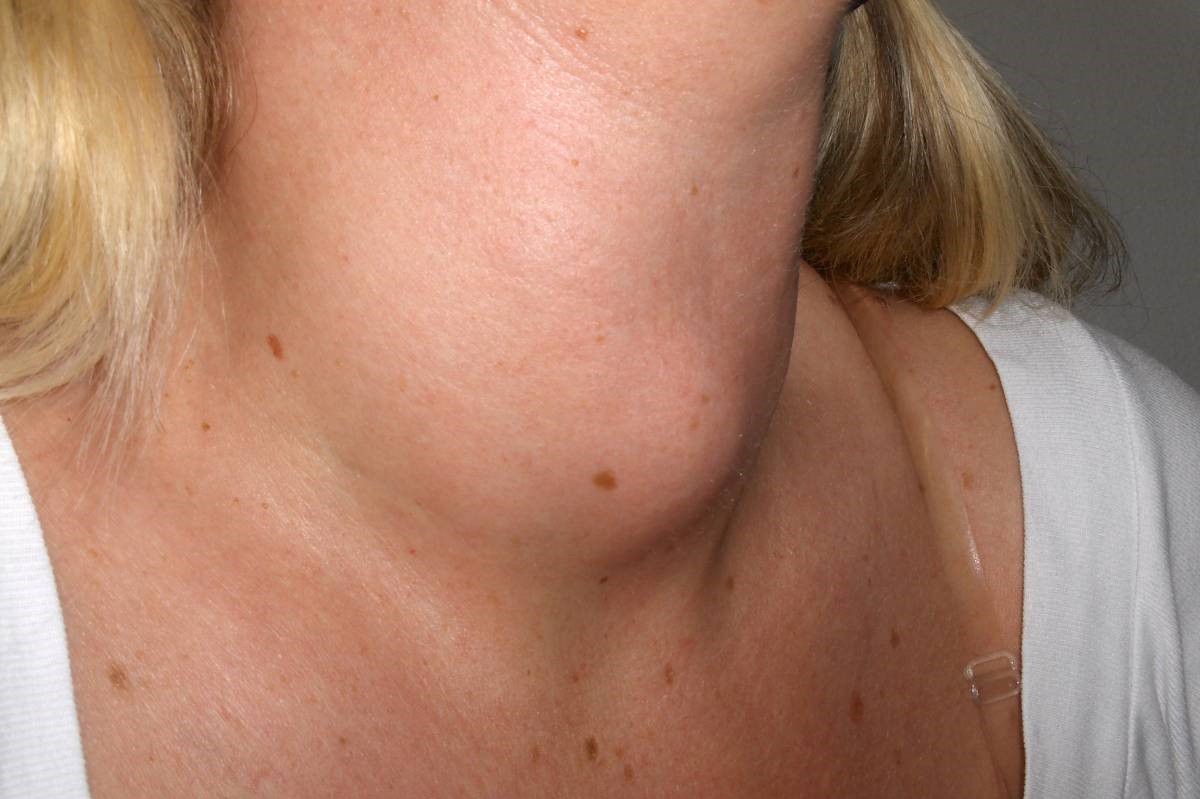
Hashimoto's thyroiditis: what it is and how to treat it
Hashimoto’s thyroiditis or chronic autoimmune thyroiditis is an autoimmune thyroid disease characterised by lymphatic infiltration (T lymphocytes) destroying and replacing the thyroid parenchyma
T lymphocytes sensitised against thyroid antigens localise in the gland infiltrating it and progressively disrupting its structure until complete destruction.
Depending on the extent of the destruction, a more or less severe hypothyroidism will develop.
What are the causes of Hashimoto’s thyroiditis?
The causes of Hashimoto’s thyroiditis are still unknown.
It is known that this disease is characterised by a certain familiarity and can often be associated with other autoimmune diseases (autoimmune polyendocrine syndromes) such as Addison’s disease, haemolytic anaemia, myasthenia gravis, type 1 diabetes and coeliac disease.
Hashimoto’s thyroiditis favours the female sex and generally middle age, although more recently it has been shown that it can occur at any age, especially during pregnancy.
Asthenia, depression and weight gain: the main symptoms of thyroiditis
Hashimoto’s thyroiditis can often be asymptomatic in the initial phase.
When symptoms appear, they are characterised by: asthenia, depression, weight gain, marked sensitivity to cold, hair loss that is more fragile, tachycardia, dry skin, muscle cramps, changes in the rhythm and quantity of the menstrual cycle, increased cholesterol, difficulty concentrating, anxiety, muscle weakness.
In some patients, a volumetric increase of the gland can be observed in the initial phase, which subsequently decreases to atrophy.
Symptoms generally become more pronounced as the thyroid-destructive process develops, worsening until maximum levels of hypothyroidism are reached, leading to a reduction in metabolism to the point of decompensation (myxedema).
How Hashimoto’s thyroiditis is diagnosed
The clinical diagnosis must be confirmed by laboratory and instrumental diagnosis; therefore the patient must be tested for thyroid hormones (TSH, FT3, FT4) and anti-TPO and anti-TG antibodies.
In addition, it is important to assess glandular morphology by subjecting the patient to a thyroid ultrasound with colour-Doppler assessment also to highlight the presence or absence of nodularities which, if present, must be monitored and in any case studied with an ultrasound-guided needle aspiration to check the cellularity within them (thyroiditis-cancer association).
While it is generally preferred not to have thyroid scintigraphy performed as the finding would not be diriment and useful for diagnostic purposes.
Complications of thyroiditis
Hashimoto’s thyroiditis in cases of hypothyroidism can lead to menstrual flow alterations that may cause major anaemia; increased risk of miscarriage (polyabortion, sterility).
Unrecognised hypothyroidism in pregnancy can cause hypo-evolution of the foetus, especially at a neurological level, so it is always necessary to study thyroid function at the start of a pregnancy and to undertake treatment in the event of hypothyroidism, always carrying out periodic checks.
How to treat Hashimoto’s thyroiditis
In cases of hypothyroidism, therapy must always be tailored to the patient and, in any case, pharmacological treatment, which is based on the intake of thyroid hormones in order to re-establish a correct peripheral hormone level, must be periodically assessed and corrected according to the patient’s different needs (age, weight, various energy consumption, etc.).
The restoration of a hormonal balance leads to the reduction and/or disappearance of the initial symptomatology reported by the patient.
Read Also:
Emergency Live Even More…Live: Download The New Free App Of Your Newspaper For IOS And Android
Symptoms And Treatment For Hypothyroidism
Lymphangiomas And Lymphatic Malformations: What They Are, How To Treat Them
Lymphadenomegaly: What To Do In Case Of Enlarged Lymph Nodes
Swollen Lymph Nodes: What To Do?
Thyroid Nodule: Signs Not To Be Underestimated
Thyroid: 6 Things To Know To Get To Know It Better
Thyroid Nodules: What They Are And When To Remove Them
Thyroid, The Symptoms Of A Malfunctioning Thyroid Gland
Thyroid Nodule: What Is It And What Are The Symptoms?
Hyperthyroidism: Symptoms And Causes
Surgical Management Of The Failed Airway: A Guide To Precutaneous Cricothyrotomy
Thyroid Cancers: Types, Symptoms, Diagnosis


